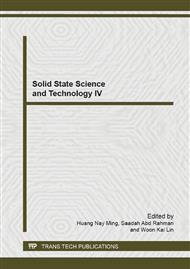p.452
p.460
p.477
p.481
p.490
p.500
p.505
p.509
p.513
Implementations of PID Controller and its Transient Behaviour in Active Suspension System
Abstract:
Advancement in computational technologies has accelerated the research effort in exploring the possibility of semi-active and active suspension. Computational simulations were used widely in the studies of the controller strategies. Among them are PID controllers. Studies from previous work suggested that PID controllers are capable of improving ride comfort and road holding capability. However, very little emphasis is given to examine the whole state of the vehicle suspension system resulted from this implementation. Therefore this study will examine the application of a basic PID controller to an active suspension system (ASS) to determine the requirement of active force that should be delivered in stabilizing the whole system. Two different configurations of electromagnetic suspension system (EMS) will be considered. One variable in the vehicle system will be selected to be the controlled output of PID controller and its effect to overall vehicle state will be observed. In the cases that the PID was able to stabilize the body responses, deterioration was noticed in the wheel responses. While it stabilizes the controlled output, the active force from controller was channelled into deteriorating other vehicle parameters.
Info:
Periodical:
Pages:
490-499
Citation:
Online since:
February 2014
Price:
Сopyright:
© 2014 Trans Tech Publications Ltd. All Rights Reserved
Share:
Citation:


